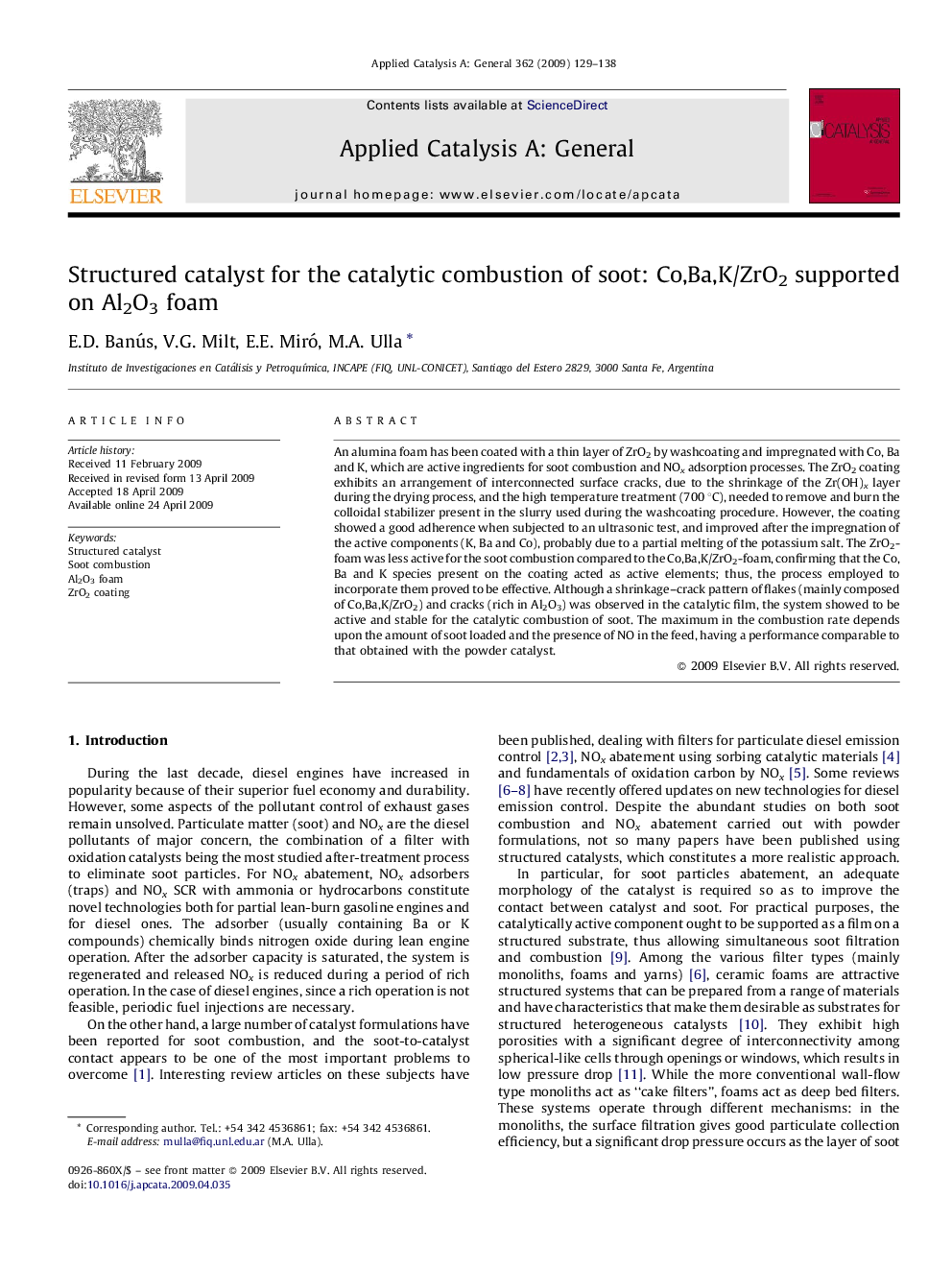| Article ID | Journal | Published Year | Pages | File Type |
|---|---|---|---|---|
| 42697 | Applied Catalysis A: General | 2009 | 10 Pages |
An alumina foam has been coated with a thin layer of ZrO2 by washcoating and impregnated with Co, Ba and K, which are active ingredients for soot combustion and NOx adsorption processes. The ZrO2 coating exhibits an arrangement of interconnected surface cracks, due to the shrinkage of the Zr(OH)x layer during the drying process, and the high temperature treatment (700 °C), needed to remove and burn the colloidal stabilizer present in the slurry used during the washcoating procedure. However, the coating showed a good adherence when subjected to an ultrasonic test, and improved after the impregnation of the active components (K, Ba and Co), probably due to a partial melting of the potassium salt. The ZrO2-foam was less active for the soot combustion compared to the Co,Ba,K/ZrO2-foam, confirming that the Co, Ba and K species present on the coating acted as active elements; thus, the process employed to incorporate them proved to be effective. Although a shrinkage–crack pattern of flakes (mainly composed of Co,Ba,K/ZrO2) and cracks (rich in Al2O3) was observed in the catalytic film, the system showed to be active and stable for the catalytic combustion of soot. The maximum in the combustion rate depends upon the amount of soot loaded and the presence of NO in the feed, having a performance comparable to that obtained with the powder catalyst.
Graphical abstractAn alumina foam, coated with ZrO2, was impregnated with Co, Ba and K and resulted to be active and stable for diesel soot combustion. The ZrO2 film exhibited a good adherence, which improved after the impregnation of the active components, although a shrinkage–crack pattern of flakes (mainly composed of Co,Ba,K/ZrO2) and cracks (rich in Al2O3) were observed.Figure optionsDownload full-size imageDownload as PowerPoint slide
